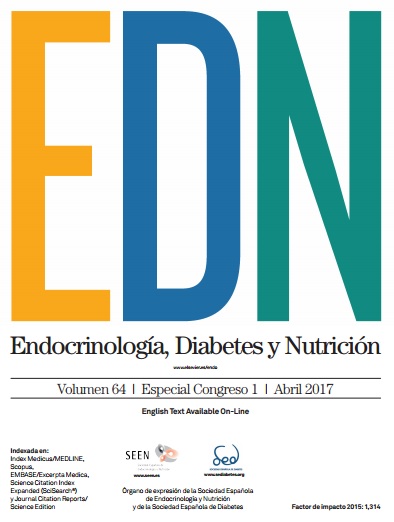O-012 - The impact of obesity on prediabetic and elderly population
aIDIBAPS, Barcelona. bCAP Compte Borrell, Barcelona. cCAP Les Corts, Barcelona.
Introduction: Prevalence of prediabetes is increasing worldwide. The International Diabetes Federation (IDF) estimates over 318 million people are affected, representing the 6.7% of adults. Concretely, in Spain the prevalence is 14.8% according to Di@betes study. Prediabetes always precedes type 2 diabetes (T2D) and is a high-risk state for develop it. According to an ADA’s expert panel, up to 70% of individuals with prediabetes will develop T2D and the annual conversion ratio is around 5-10%. The risk factors for this progression include old-age, obesity and unhealthy lifestyle. But develop T2D is not the only problem; prediabetes, itself, is not a benign condition. People with prediabetes may have concomitant damage that are traditionally considered to be complications of T2D including macro and microvascular complications.
Objectives: Our hypothesis is that, although all participants are prediabetics and older, the condition of obesity may be a sufficient risk factor to think of a worse prognosis, that is, a faster progression to T2D. The objective is to investigate the distribution of different anthropometric, biochemical and lifestyle data comparing individuals who presented obesity with who didn’t.
Material and methods: It’s a cross-sectional study for which 200 participants were recruited from three primary care centers (Les Corts, Compte Borrell and Casanova) managed by CAPSBE and, finally, 182 were participated. The subjects came to consultation and their clinical history data were checked, their anthropometric measurements were obtained, the different questionnaires were filled and a fasting blood sample was collected. All participants were divided into two groups according if they were obese (OB) or not (NOB) and their anthropometric measures indicated that 46% were within the range of obesity (BMI ≥ 30). About half were women in both groups; the mean age was 71.5 ± 5.6 years old and the evolution of prediabetes was 4.8 ± 3.4 years.
Results: As expected, OB showed a higher weight (p-value < 0.001), BMI (p-value < 0.001), waist (p-value < 0.001) and hip (p-value < 0.001) circumference and systolic (p-value = 0.002) and diastolic (p-value = 0.009) blood pressure. Related to biochemical parameters, OB is associated with significantly higher glucose (p-value = 0.005), HbA1c (p-value = 0.004) and insulin (p-value < 0.001), also with worse insulin resistant (p-value < 0.001) and a compensatory effect of pancreatic B function (p-value = 0’013). Obesity was also related with worse quality of life (p-value < 0.001) and quality of sleep = 0.046). All these results, suggest that OB group have a worse lifestyle. Which is corroborated with less waste energy doing physical activity in METS (p-value = 0.012) and in kilocalories (p-value = 0.029) and also, with analyzed dietary records that shown NOB participants consumed a healthier diet expressed in the consumption of macro and micronutrients.
Conclusions: It appears that the high-risk condition to develop T2D related to impaired fasting glucose and elderly could worsen due to obesity.
Funding: Recercaixa.







